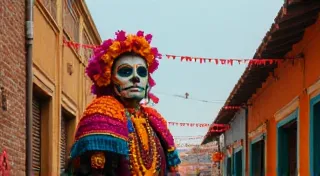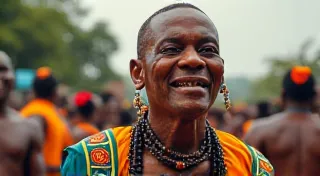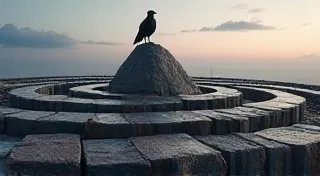Masks of New Caledonia: Melanesian Art and Storytelling
New Caledonia, a stunning archipelago in the southwest Pacific, boasts a rich and vibrant cultural heritage deeply intertwined with the art of mask making. Rooted in ancient Melanesian traditions, these masks are far more than decorative objects; they are potent symbols, vessels of ancestral spirits, and crucial components of elaborate ceremonies and performance art. This article explores the diverse traditions of mask making in New Caledonia, delving into the materials used, the unique styles that have evolved, and the profound meanings embedded within these remarkable creations.
A Legacy of Melanesian Influence
The mask-making traditions of New Caledonia are a direct inheritance from the broader Melanesian cultures that stretch across the Pacific. For centuries, masks have been integral to rituals involving initiation, healing, ancestor veneration, and agricultural fertility. These ceremonies, often shrouded in secrecy, involved complex choreography, drumming, and chanting, with the masks playing a central and transformative role. Each mask represents a specific spirit or ancestor, and the wearer, often a respected elder or initiated young man, becomes a conduit between the human and spiritual realms. The visual storytelling embedded within these masks resonates with traditions found across the Pacific, prompting comparisons to the nuanced and deeply symbolic Balinese masked dances which also use masks to depict spirits and tell ancestral stories.
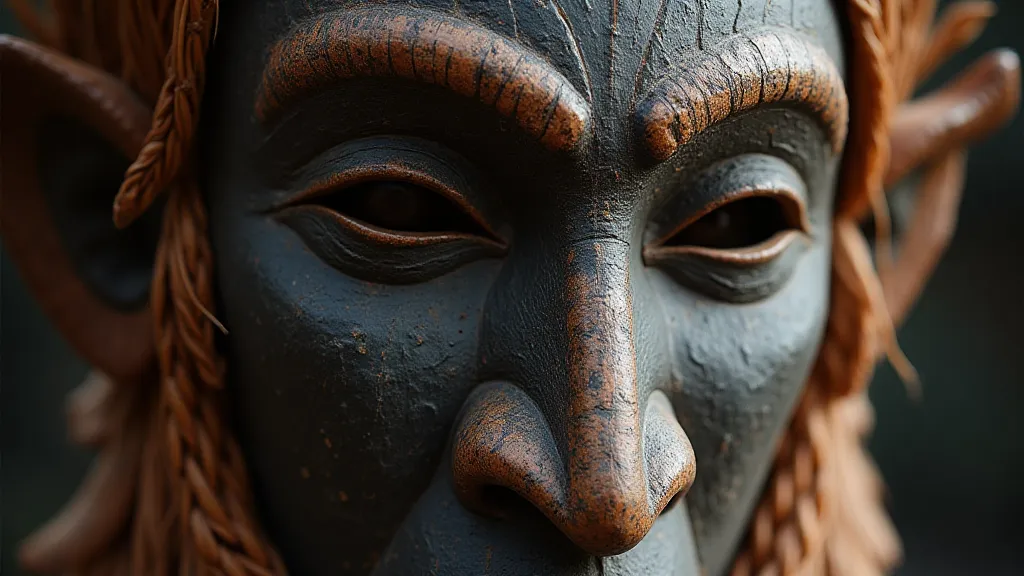
Materials and Techniques
The materials used in New Caledonian mask making reflect the island’s natural resources. Wood, particularly varieties like breadfruit and sandalwood, is the primary material. Natural fibers, such as coconut coir and pandanus leaves, are used for embellishments and headdresses. Pigments are derived from plants, minerals, and charcoal, resulting in a palette of earth tones, reds, and blacks. The construction methods vary between tribes, but generally involve careful carving, shaping, and assembling of these natural components. Some masks incorporate feathers from native birds, adding a striking visual element. The artistry lies not only in the carving but also in the selection and placement of these natural materials.
Regional Styles & Tribal Variations
While sharing a common Melanesian heritage, mask-making traditions in New Caledonia exhibit significant regional variations. The custom of mask creation differs greatly between the northern islands of Île des Pins and Mare, and the southern islands of Grande Terre. Masks from the north often feature elaborate headdresses and vibrant colors, while masks from Grande Terre can be more stoic and minimalist, emphasizing the power of the carved form. The significance of ritual and performance is universal, and the level of detail and symbolism employed offers parallels to the dedicated artistry found in other cultural traditions, such as the meticulously crafted Japanese Noh masks used in a highly formalized and symbolic theatrical art form.
- Cheeky Masks of Île des Pins: Known for their humor and exaggeration, these masks are often associated with playful trickery and fertility rites.
- Spirit Masks of Grande Terre: These masks are revered as embodiments of ancestral spirits and are often used in healing ceremonies and during traditional festivals.
- Bird Masks of Mare: Inspired by the native birds of the island, these masks are often utilized in coming-of-age rituals and represent transition and transformation.
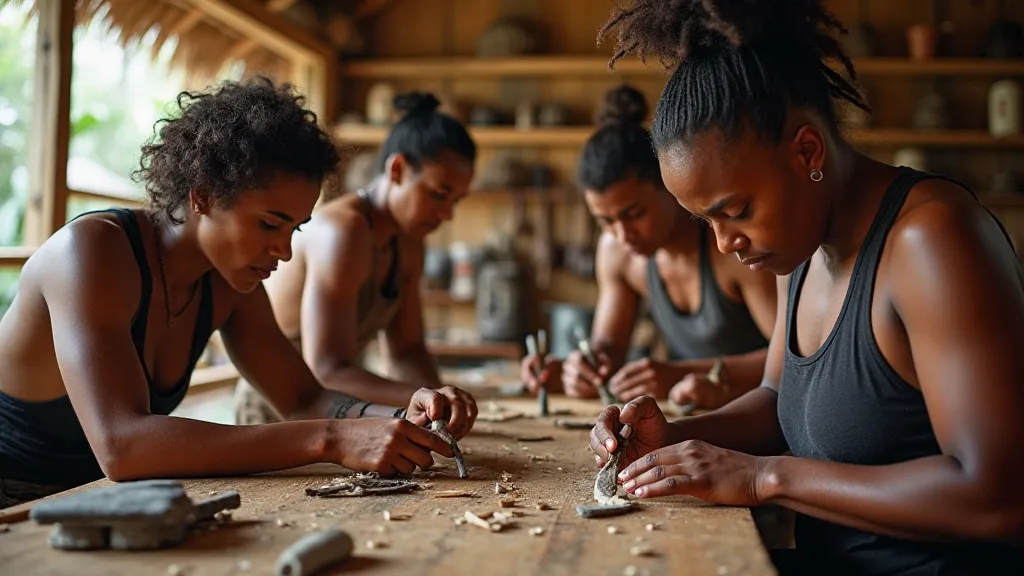
The Meaning and Significance of the Masks
Beyond their aesthetic appeal, New Caledonian masks hold deep cultural significance. They are not mere representations; they are believed to be conduits to the spirit world. The masks represent ancestors, spirits of nature, or mythological figures. Specific masks are associated with particular ceremonies and play a crucial role in maintaining social order and perpetuating cultural knowledge. The act of wearing a mask transforms the individual, allowing them to embody the spirit being represented. Consequently, immense respect and reverence are accorded to both the mask and the wearer. The use of masks as a means of social commentary and satire also appears in other cultures, most notably in the vibrant and often biting tradition of Corsican Revithas masks, where masked performers engage in playful mockery and theatrical critique.
Elaborating on the Significance of Ancestors and Spirits
The concept of ancestral connection is deeply interwoven with the spiritual practices surrounding mask making. Each mask is not simply a crafted object, but an embodiment of a particular ancestor’s essence or the characteristics of a specific spirit. The skill and reverence with which they are created underscore this profound respect. Elaborate rituals are performed to consecrate the masks, often involving chanting, drumming, and offerings to the spirits. These rituals aren't isolated events; they contribute to the ongoing dialogue and connection between the living and the departed, reinforcing community values and preserving cultural memory. This highlights a universal human need to connect with something beyond ourselves and to understand our place within a larger narrative.
Mask Making Beyond New Caledonia: A Global Perspective
While New Caledonia’s mask-making traditions are unique and vibrant, they are part of a much larger global tapestry of mask-making practices. Across cultures and continents, masks have served a diverse range of functions, from religious ceremonies and theatrical performances to social commentary and personal adornment. The persistence of mask traditions throughout history demonstrates the enduring power of symbolism and the human need to embody and express profound emotions and beliefs. The ability to transform oneself through a mask allows for a temporary transcendence of the everyday, offering a glimpse into different realms of existence.
The Challenges of Preservation and Modernity
The continued existence of these traditions is not guaranteed. The forces of globalization and modernization pose significant challenges to the preservation of New Caledonian mask-making practices. Younger generations may be drawn to alternative forms of entertainment and expression, potentially leading to a decline in traditional knowledge and skills. Furthermore, the commercialization of masks as tourist souvenirs can sometimes dilute their cultural significance and compromise their authenticity. However, concerted efforts are underway to counteract these trends, with community leaders, artists, and cultural organizations working to document techniques, transmit knowledge to younger generations, and promote the value of traditional arts.
Contemporary Artists and Evolving Traditions
While rooted in ancient traditions, the art of mask making in New Caledonia is not static. Contemporary artists are exploring new interpretations of traditional forms, incorporating modern materials and techniques while remaining true to the core values and spiritual significance of the masks. This blending of tradition and innovation ensures the continued relevance of mask making in a rapidly changing world. The adaptation of traditional art forms to contemporary contexts is a common thread across cultures, demonstrating the resilience and adaptability of human creativity. Consider, for example, how the use of death masks historically served to preserve the likeness of the deceased, a practice with striking parallels to some of the traditions surrounding death rituals found in communities such as those who create the Polish Death Masks, a poignant tradition reflecting a deep reverence for the departed.
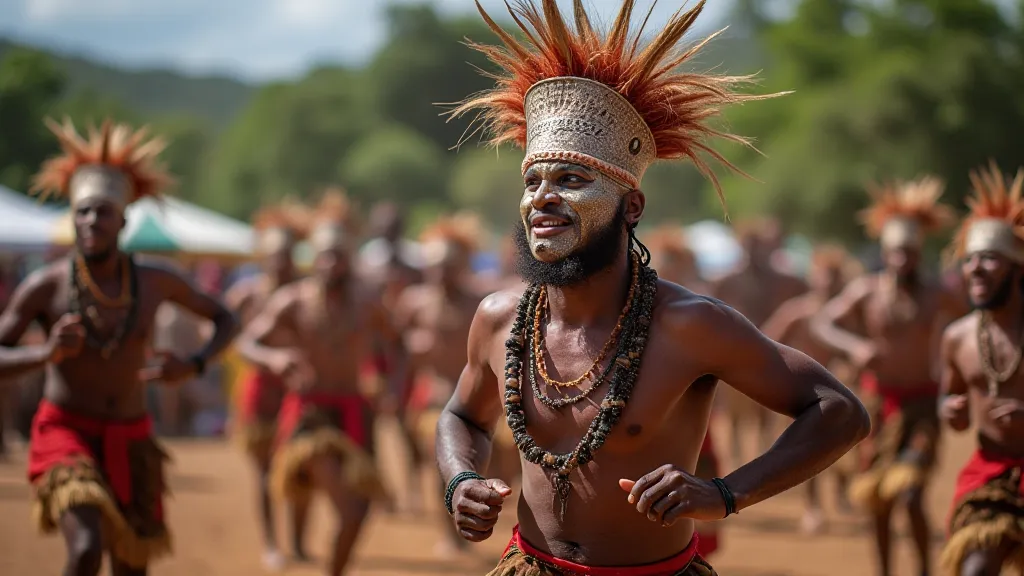
Looking Ahead: Sustaining a Cultural Legacy
The masks of New Caledonia are far more than just objects of artistic beauty; they are living embodiments of a rich cultural heritage. Their preservation is not only a responsibility to the people of New Caledonia but also a gift to the world. By supporting community-led initiatives, promoting cultural awareness, and fostering a deep appreciation for the artistry and significance of these remarkable creations, we can ensure that the masks of New Caledonia continue to inspire and enlighten generations to come.
